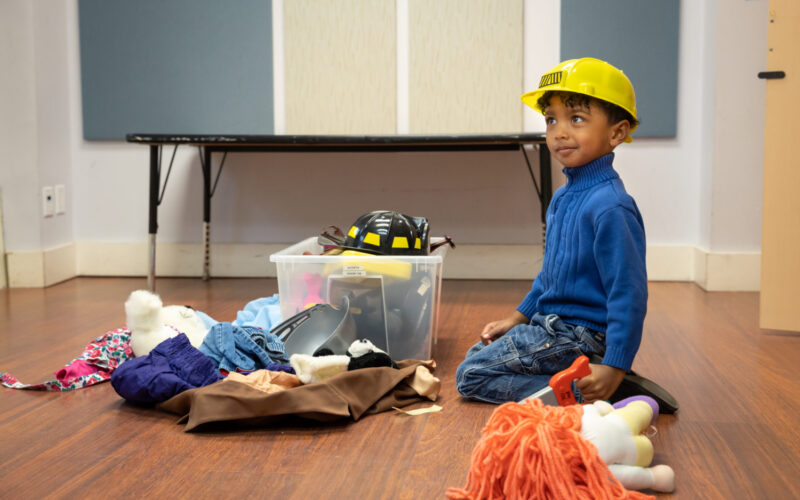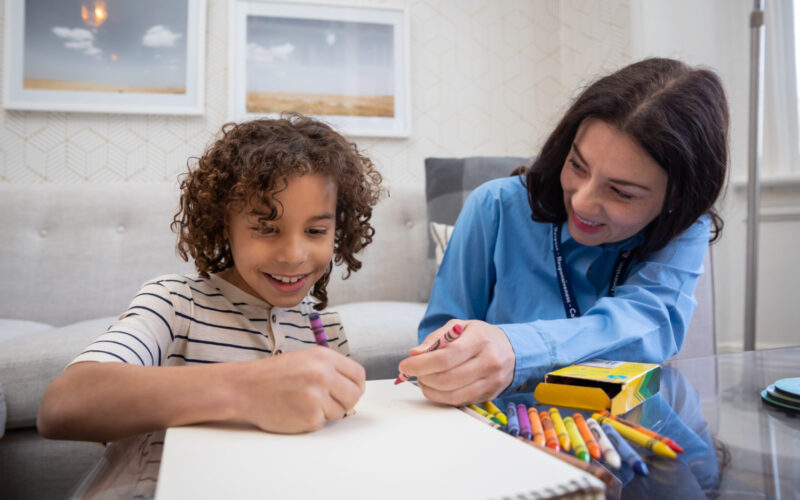If you have a child or teen with autism who engages in aggressive or self-harming behaviours, safety is a constant concern. Fortunately, there are a few proactive changes and preventive strategies that you can use to make your home a safer space for your whole family. Some families experiencing challenging behaviours may also benefit from our Urgent Response Services.
Here are some tips to help you get started.
- Put away dangerous items: Lock up sharp objects like scissors or knives or place them high up, out of reach, for example, in a cabinet that your child can’t access.
- Hide medication: Place all medication out of sight and out of reach. If your child or teen can reach these items, they may take the medication even if you have told them not to.
- Designate a safe space for your child: Find a location in the home where your child can go to calm down before their behaviour reaches a crisis point. This space should be clutter-free and should not contain furniture with sharp corners. You may consider placing a pillow in the space that your child can use to safely take out any frustrations. Be sure the space does not contain items that can be thrown or broken.
- Designate a safe space for other family members: While it’s natural to want to be there to support your child, this must be balanced with the need to keep everyone safe. This is why it’s a good idea to find a location in the home (such as a bedroom or a bathroom) where other family members can go if their safety is at risk.
- Reduce clutter: An organized home that doesn’t contain too many loose items lying around is a safer space for a child whose behaviour may become aggressive or who may self-harm.
- Beware of hard surfaces: For children who engage in self-injurious behaviour that involves banging their head, place padding on the edges and corners of tables. A designated child space in the home should also be free of any hard surfaces or loose items – for example, instead of a sofa with an armrest, place a soft beanbag chair in the room.
- Place extra locks on doors: If a child’s escalating behaviour leads to runaway attempts, be sure to keep doors locked at all times and place extra locks on doors. You may also want to consider motion sensors that will indicate when a child has left the home.
- Consider visuals: For some children with autism, visuals may be helpful as a preventive measure. You may consider placing a picture of a stop sign in front of a door if a child runs away when their behaviour escalates. Another idea is to place a picture of a flame near your stove so your child has a visual reminder that the stove can become very hot.
- Create a vulnerable person profile: Consider having a vulnerable person profile created with your local police department. This can be done online by uploading a picture of your child and including information about their diagnosis, skills and needs. The purpose is to make police aware that they should use a different approach with your child if a situation arises where they need to enter the home.
- Create a safety plan: This provides you and your family with clear guidelines so you know how to respond to various behaviours to ensure everyone’s safety in the home. A child with autism may start to scream in a specific way before they become aggressive. The safety plan will outline what everyone should do in this situation before the behaviour escalates. For example, an older child may take a younger child to their bedroom and read them a book, while a parent takes the child with autism to the designated safe space where they can calm down. If the behaviour persists or continues to escalate, the safety plan would outline when it’s time to call 911.
When is it time to get help?
If your child’s challenging behaviour escalates to the point where it is threatening the safety of your child, or the safety of other family members, it’s time to get help. While each family situation is different, as soon as you feel unsafe in your own home, you shouldn’t hesitate to seek support by calling 911 or another crisis line.
Here are some tips to help you navigate this situation if it occurs:
- Be self-aware: Make sure you’re aware of your positioning in the home relative to the space and other objects; ensure you don’t accidentally end up backing yourself into a corner. Never turn your back on your child when their behaviour is escalating.
- Have a plan: Determine ahead of time the point when you will call 911 or a crisis line. You and other household members may decide it’s time to pick up the phone after the first violent act occurs, or perhaps after more than one violent act, or you may call once a family member is injured.
- Get everyone on board: Each household will need to determine what makes sense for their family. It is important that all family members are on the same page when it comes to deciding at what point it’s time to call a crisis hotline.
Aside from calling 911, you can also call a mobile crisis team that comes to the home. Youthdale is a Toronto-based mental health care agency that helps children, youth and families dealing with complex needs.
How Surrey Place can help
If you’re a family member or caregiver whose child exhibits high-risk behaviours that require an urgent response, like violent thinking, aggression, or property destruction, you may be eligible for Surrey Place’s Urgent Response Services. Surrey Place’s Urgent Response Services can also help you develop a safety plan for your family. For autism support for needs that are not urgent, please visit Surrey Place’s Autism Services page.
About Urgent Response Services
This resource was written with support from staff in Urgent Response Services. Urgent Response Services are part of the Ontario Autism Program. They were created to support children or youth with an emerging urgent need. Surrey Place leads Urgent Response Services for Toronto Region in partnership with 2-Spirited People of the 1st Nations, Community Living Toronto, Family Service Toronto, Geneva Centre, Holland Bloorview, Kerry’s Place, Lumenus, SAAAC, SMILE Canada and Strides Toronto.


